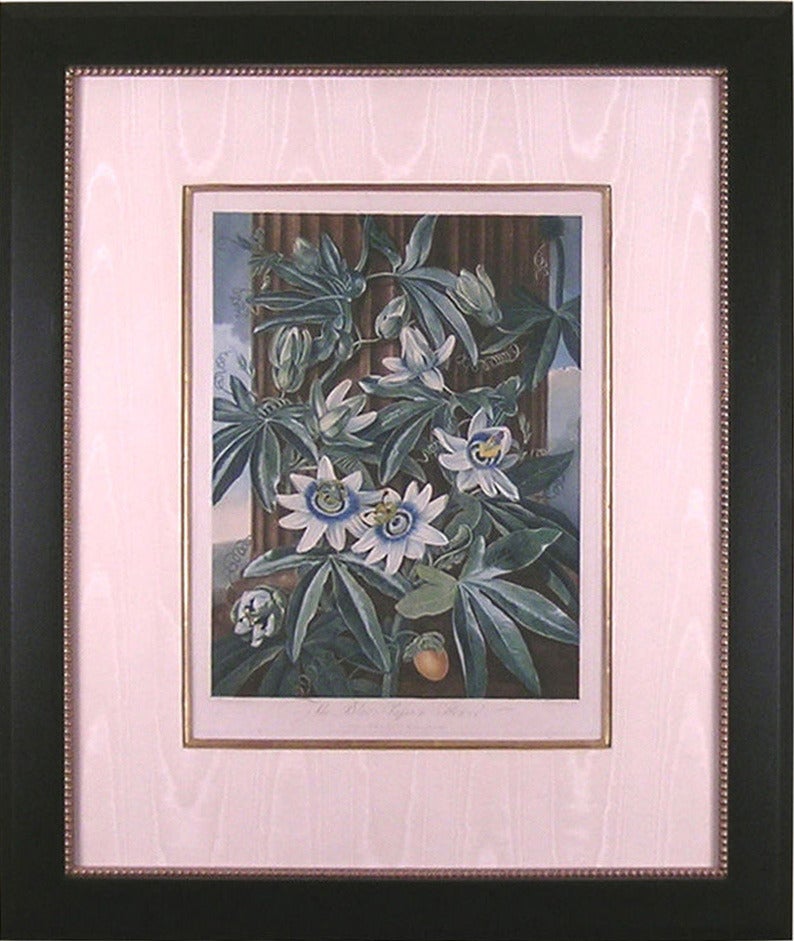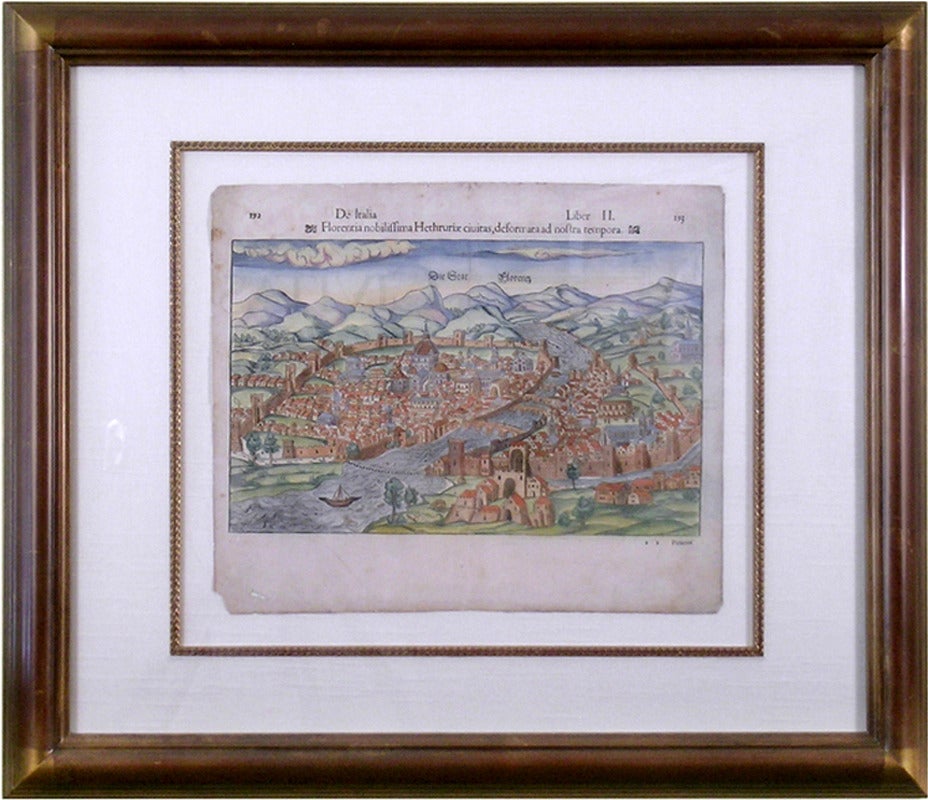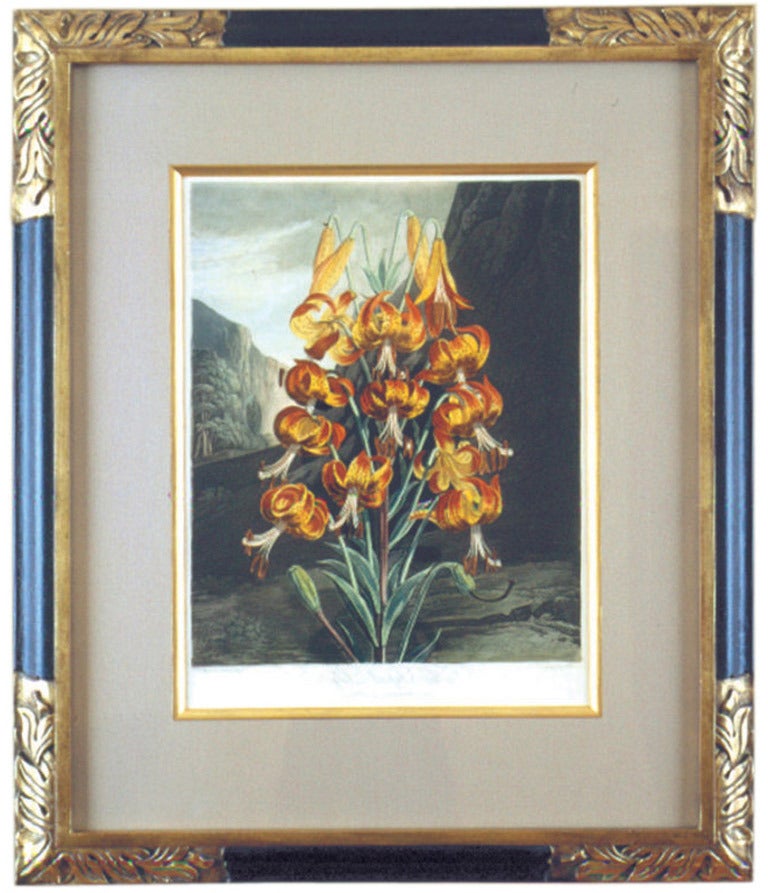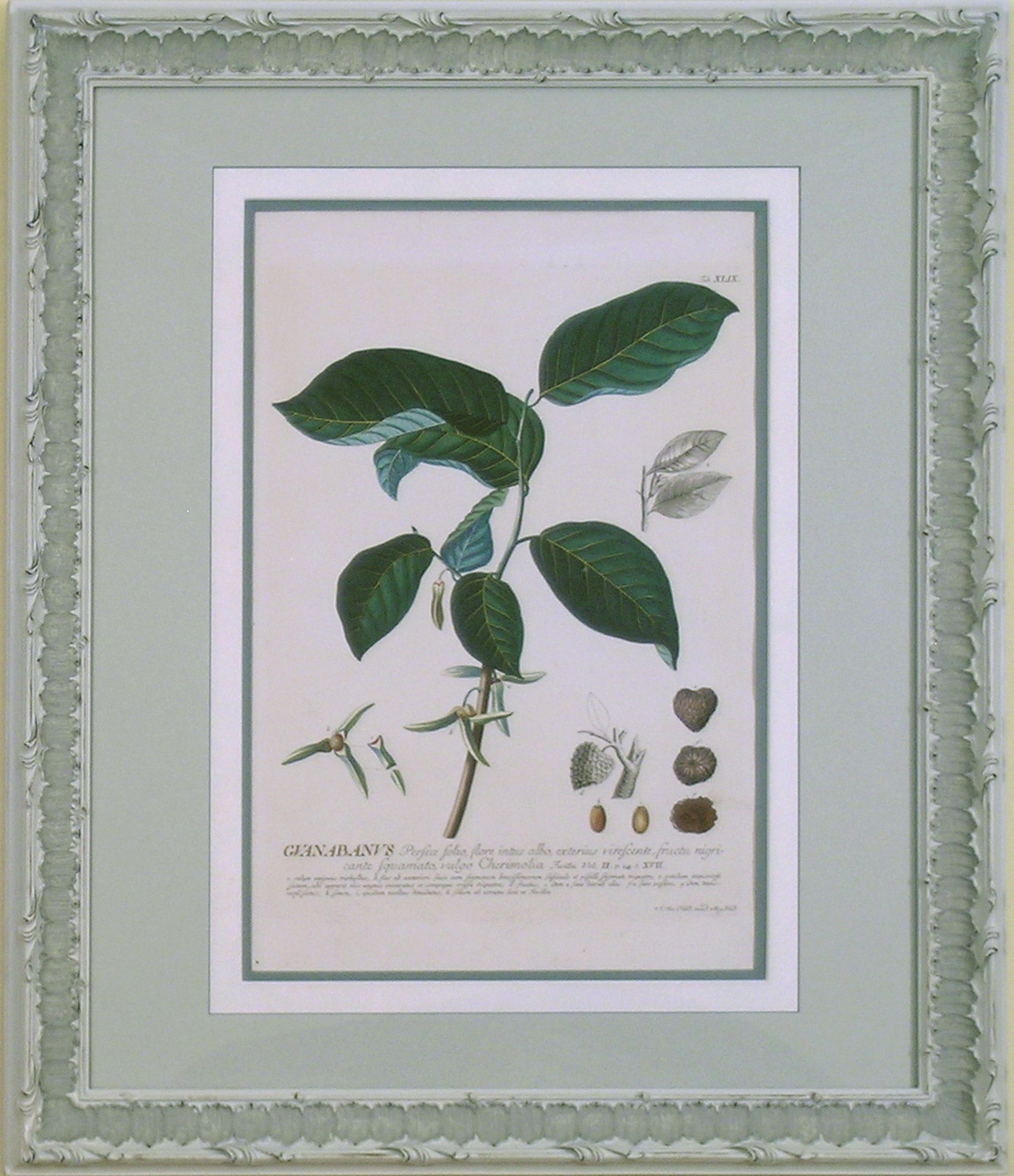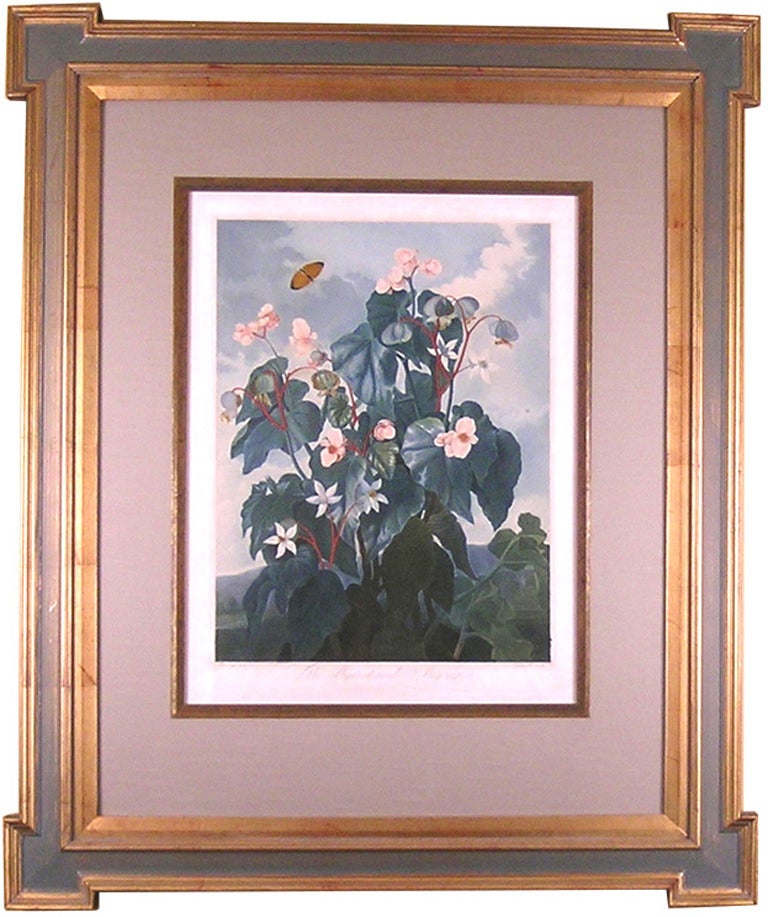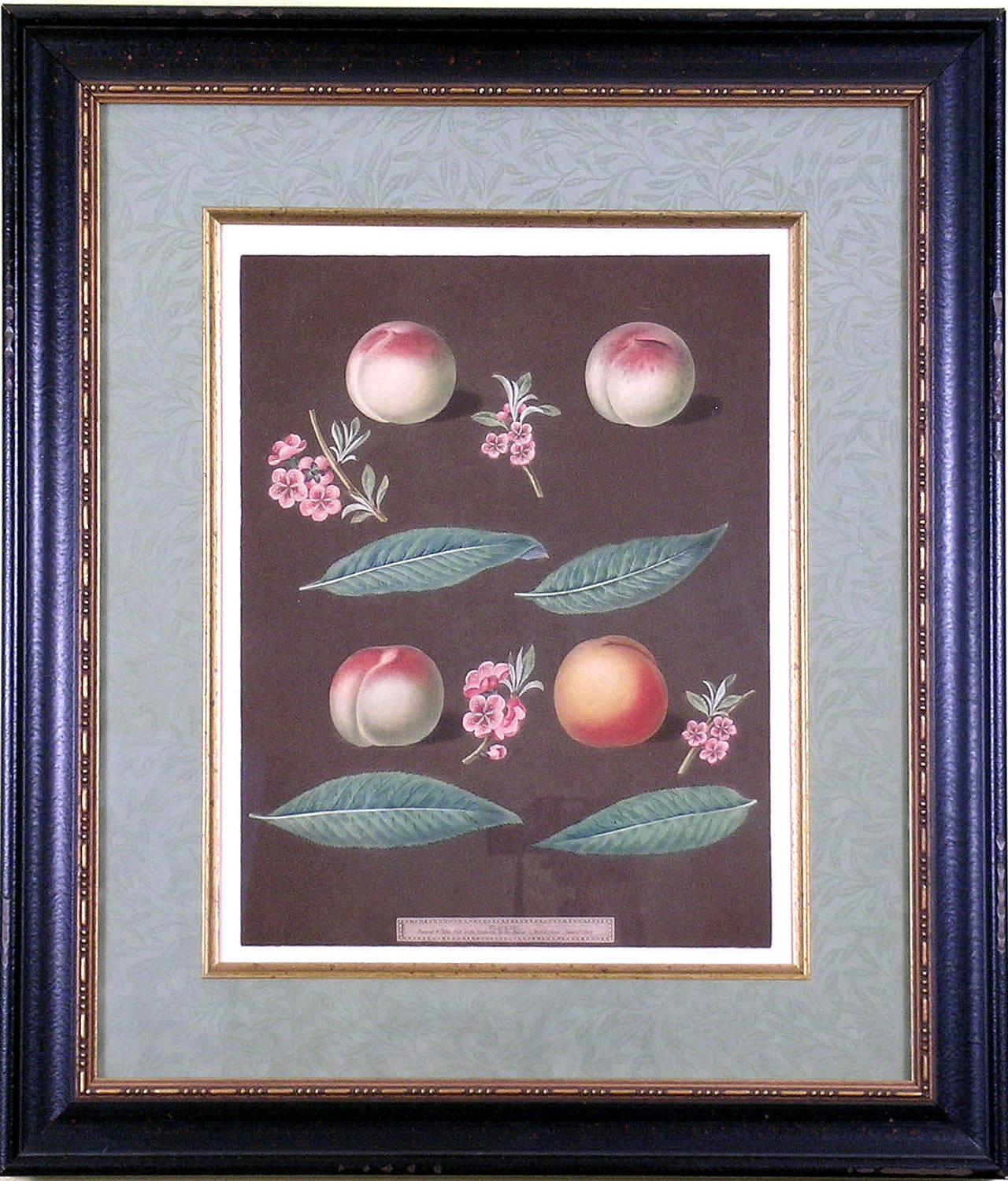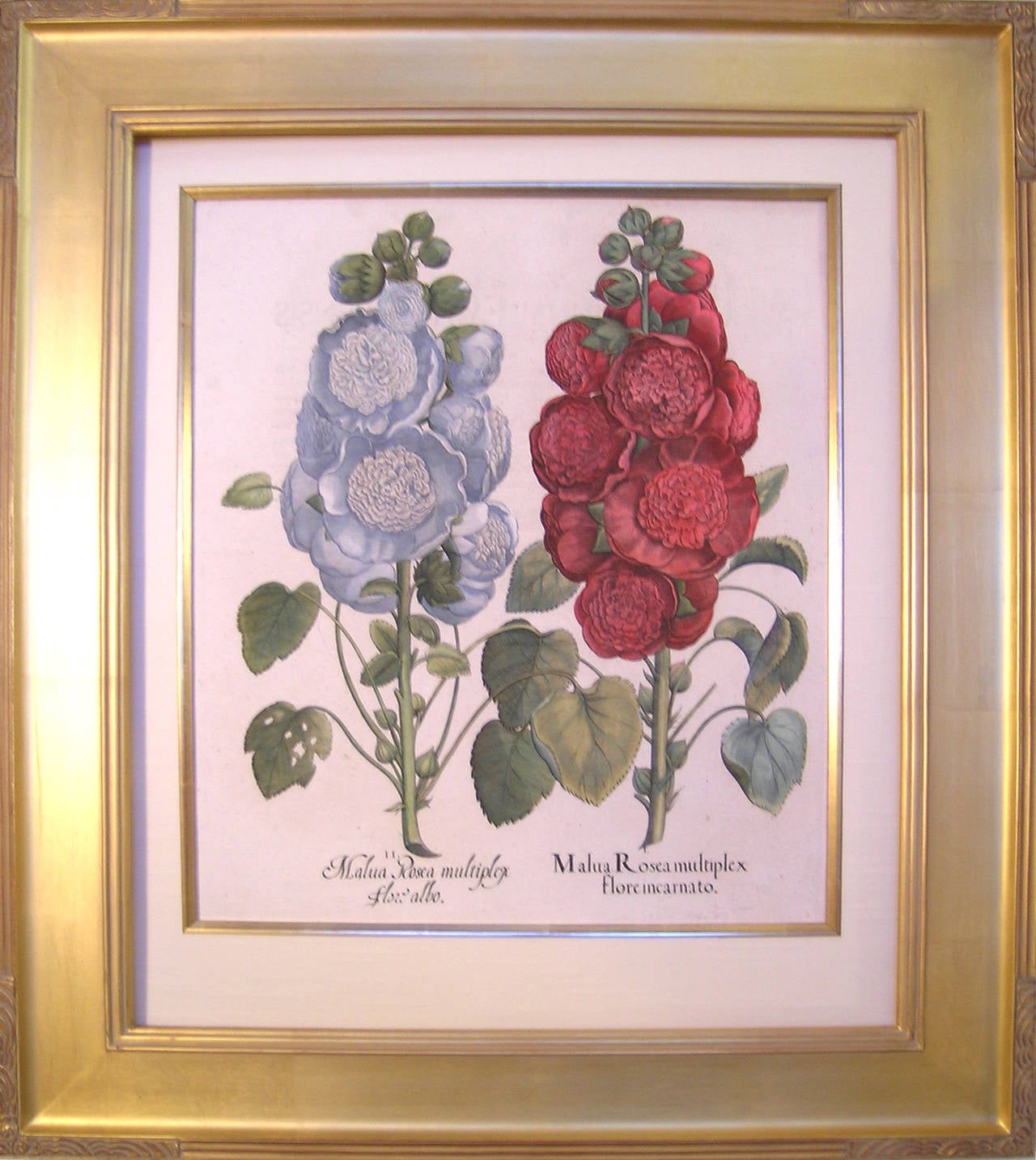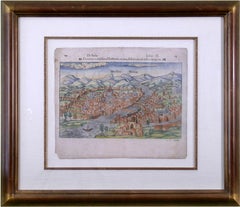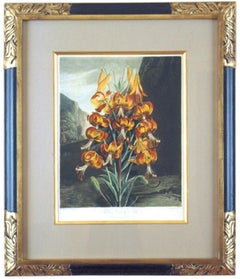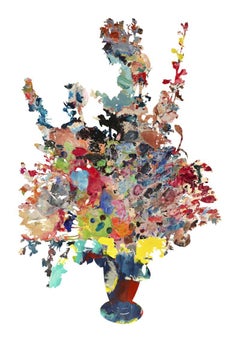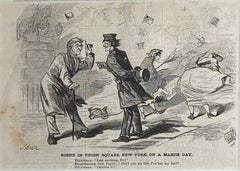
Common or Spectacled Caiman and South American or False Coral Snake
View Similar Items
Want more images or videos?
Request additional images or videos from the seller
1 of 5
Maria Sibylla MerianCommon or Spectacled Caiman and South American or False Coral Snake1705
1705
About the Item
- Creator:Maria Sibylla Merian (1647 - 1717, Dutch)
- Creation Year:1705
- Dimensions:Height: 27.75 in (70.49 cm)Width: 24 in (60.96 cm)Depth: 1 in (2.54 cm)
- Medium:
- Movement & Style:
- Period:
- Condition:Clean, crisp image. Framed to museum specifications using archival matting, backing, hinging. Glazed with ultra-violet filtering Plexiglas.
- Gallery Location:Florham Park, NJ
- Reference Number:Seller: 2.25.141stDibs: LU652271772
About the Seller
5.0
Gold Seller
These expertly vetted sellers are highly rated and consistently exceed customer expectations.
1stDibs seller since 2014
161 sales on 1stDibs
Typical response time: 3 hours
More From This SellerView All
- The Blue Passion FlowerBy Dr. Robert John ThorntonLocated in Florham Park, NJDR. ROBERT JOHN THORNTON (c1765 – 1832). The Temple of Flora. London, 1798-1810. Painted by Reinagle, Henderson, Pether, et. al. Engraved by Ward, Caldwall, Earlom, et. al. A...Category
Early 19th Century Academic Prints and Multiples
MaterialsAquatint, Archival Paper, Archival Tape, Engraving, Handmade Paper, Plex...
- De Italia Florentia. (Florence, Italy)By Sebastian MünsterLocated in Florham Park, NJSebastian Munster (1488-1552) Cosmographia Basel, 1579 ca Woodcut. Later Hand-Color. Munster's Cosmographia was one of the most influential wo...Category
18th Century and Earlier Academic Prints and Multiples
MaterialsSilk, Watercolor, Archival Paper, Archival Tape, Engraving, Handmade Pap...
- The Superb LilyBy Dr. Robert John ThorntonLocated in Florham Park, NJDR. ROBERT JOHN THORNTON (c1765 – 1832). The Temple of Flora. London, 1798-1810. Painted by Reinagle, Henderson, Pether, et. al. Engraved by Ward, Caldwall, Earlom, et. al. A...Category
18th Century and Earlier Academic Prints and Multiples
MaterialsArchival Paper, Archival Tape, Engraving, Gesso, Handmade Paper, Mezzoti...
- Meriana (Bugle Lily)By Georg Dionysius EhretLocated in Florham Park, NJGEORGE DIONSYSIUS EHRET (1708-1770). Plantae Selectae.... Text by Dr. Christoph Trew. Drawn by Georg Dionsysius Ehret. Engraved by Johannes Jacobus and Johannes Elias Haid. Nuremberg, 1750-73. Hand-colored engravings. Titles highlighted with goldleaf. 100 plates. 19.5” x 13.5” Unframed. A supplement of 20 plates issued by B.C. Vogel in 1790. "The dominant influence in botanical art during the middle years of the 18th century." "One of the finest records of cultivated flowers..." "His accuracy and general excellence as a true botanical artist have never been equaled." Ehret’s praises have been sung throughout the centuries. While his training was in gardening, Ehret's true talents were in his art. Drawing the specimens from life in the garden's in which he labored won Ehret his employer's praise and his co-workers jealousy. Not only were his botanical portraits highly accurate in every technical detail, they reflected an awe-inspiring love of subject. A restless man, Ehret wandered from Heidelberg through Germany to Vienna and Basle, working his way to Paris and finally settling in London. He was honored by peers and patrons wherever he traveled. Ehret's list of benefactors include the most brilliant and generous members of society in his day. However, it was Christoph Trew, a wealthy physician, lifelong supporter and friend, who published the work for which Ehret is best known, Plantae Selectae. Ehret went to Leiden to meet Carolus Linnaeus and they became the best of friends. It is the Linnaen classification of plants to which Ehret subscribed. In distinguishing of the sexual systems of plants and the cross-sectioning of specimens, based on the teachings of Linnaeus, Ehret's illustrations have become the standard followed by horticulturists throughout the centuries. Ehret is the only foreigner to be elected a Fellow of the Royal Society in England. The illustrations for Plantae Selectae were printed in black and white and painstaking colored by hand at the time of publication. The color is superb! All of the initial words of the titles were gilded; a glorious tribute to an achievement of excellence. Various scholars at the time of publication praised the book highly, singling out the excellent quality of Ehret's watercolor studies, as well as Haid's fidelity to them. In a letter to Linnaeus in the 1750's, Dr. Trew called the book "one of the miracles of our century in the natural sciences." In the 1960's, Claus Nissen wrote "the Plantae Selectae became the most beautiful German plant...Category
1750s Academic Prints and Multiples
MaterialsGold Leaf
- Guanabanus (Guabana or Soursop Fruit)By Georg Dionysius EhretLocated in Florham Park, NJGEORGE DIONSYSIUS EHRET (1708-1770). Plantae Selectae.... Text by Dr. Christoph Trew. Drawn by Georg Dionsysius Ehret. Engraved by Johannes Jacobus and Johannes Elias Haid. Nuremberg, 1750-73. Hand-colored engravings. Titles highlighted with goldleaf. 100 plates. 19.5” x 13.5” Unframed. A supplement of 20 plates issued by B.C. Vogel in 1790. "The dominant influence in botanical art during the middle years of the 18th century." "One of the finest records of cultivated flowers..." "His accuracy and general excellence as a true botanical artist have never been equaled." Ehret’s praises have been sung throughout the centuries. While his training was in gardening, Ehret's true talents were in his art. Drawing the specimens from life in the garden's in which he labored won Ehret his employer's praise and his co-workers jealousy. Not only were his botanical portraits highly accurate in every technical detail, they reflected an awe-inspiring love of subject. A restless man, Ehret wandered from Heidelberg through Germany to Vienna and Basle, working his way to Paris and finally settling in London. He was honored by peers and patrons wherever he traveled. Ehret's list of benefactors include the most brilliant and generous members of society in his day. However, it was Christoph Trew, a wealthy physician, lifelong supporter and friend, who published the work for which Ehret is best known, Plantae Selectae. Ehret went to Leiden to meet Carolus Linnaeus and they became the best of friends. It is the Linnaen classification of plants to which Ehret subscribed. In distinguishing of the sexual systems of plants and the cross-sectioning of specimens, based on the teachings of Linnaeus, Ehret's illustrations have become the standard followed by horticulturists throughout the centuries. Ehret is the only foreigner to be elected a Fellow of the Royal Society in England. The illustrations for Plantae Selectae were printed in black and white and painstaking colored by hand at the time of publication. The color is superb! All of the initial words of the titles were gilded; a glorious tribute to an achievement of excellence. Various scholars at the time of publication praised the book highly, singling out the excellent quality of Ehret's watercolor studies, as well as Haid's fidelity to them. In a letter to Linnaeus in the 1750's, Dr. Trew called the book "one of the miracles of our century in the natural sciences." In the 1960's, Claus Nissen wrote "the Plantae Selectae became the most beautiful German plant...Category
1750s Academic Prints and Multiples
MaterialsGold Leaf
- Urtica (Nettle)By Georg Dionysius EhretLocated in Florham Park, NJGEORGE DIONSYSIUS EHRET (1708-1770). Plantae Selectae.... Text by Dr. Christoph Trew. Drawn by Georg Dionsysius Ehret. Engraved by Johannes Jacobus and Johannes Elias Haid. Nuremberg...Category
1750s Academic Prints and Multiples
MaterialsGold Leaf
You May Also Like
- Color-Blast BouquetBy Dionisios FragiasLocated in New York, NYDionisios Fragias is a New York -based artist born on the Greek island of Kefalonia and raised in New York City. He is the protege of the artist Jeff Koons whose years-long mentorshi...Category
2010s Abstract Abstract Prints
MaterialsArchival Tape, Archival Ink, Archival Paper, Color, Archival Pigment
Price Upon Request - “Scene in Union Square, New York on a March DayBy Winslow HomerLocated in Southampton, NYOriginal wood engraving on paper. Taken from Harper’s Weekly, April 7, 1860. Signed “Homer” in the plate. Condition is good. Slight staining lower left. Very slight tear to the l...Category
1860s Academic Figurative Prints
MaterialsArchival Paper, Engraving
- Bird and Beetle - Etching and watercolor (Natural History of Birds, 1741)By George EdwardsLocated in Paris, FRGeorge EDWARDS Bird and beetle ('The Gowry Bird') Original engraving, enhanced with watercolor Printed signature in the plate Dated, 1741 28.8 x 23.3 cm Created for Volume I of the...Category
1740s Academic Animal Prints
MaterialsEngraving, Watercolor
- La Marchande des Quatres-SaisonsBy Edgar ChahineLocated in Middletown, NYEtching with drypoint on cream wove paper, 11 3/4 x 13 3/4 inches (297 x 347 mm), full margins. Signed in pencil and numbered 32/40, lower margin. Minor mat tone and several small lo...Category
Early 20th Century Post-Impressionist Portrait Prints
MaterialsHandmade Paper, Rag Paper, Drypoint, Etching
- Hand-coloured Print of weeping mythical sculpture angels in Walnut FrameLocated in London, GBHand-coloured tableau of a weeping spirit and her guardians, immobilised in marble. A disjointed narrative looking at recovery and protection, the angels shield the spirit with tender embraces and cry for her when alone. Taken from The Sialia Marbles, a series of portraits containing ephemeral human sculptures taken between 2016-19. Together these works act as tales contained in a fictional sculpture hall, in direct reaction to Andre Malraux’s 1947 Le Musee Imaginaire (Museum Without Walls). During the beginning of the 'Museum Age' in the 18th century , writer Johann Wolfgang Von Goethe discussed mythical...Category
18th Century Victorian Nude Photography
MaterialsCotton, Archival Pigment, Pigment, Color, Walnut, Paint, Photographic Fi...
$2,229 Sale Price35% Off - Dear One Threads A Cocoon - Unique Hand-coloured Print in Walnut frameLocated in London, GBHand-coloured portrait of a human larvae bursting out of their cocoon, immobilised in marble. Representative of a safe and isolating space, the cocoon is both a cage and a shelter. This tale is a study of transformation, of breaking apart and coming back together as the larvae emerges from the silken threads. Taken from The Sialia Marbles, a series of portraits containing ephemeral human sculptures taken between 2016-19. Together these works act as tales contained in a fictional sculpture hall, in direct reaction to Andre Malraux’s 1947 Le Musee Imaginaire (Museum Without Walls). During the beginning of the 'Museum Age' in the 18th century , writer Johann Wolfgang Von Goethe discussed mythical sculpture...Category
18th Century Other Art Style Figurative Photography
MaterialsCotton, Archival Pigment, Pigment, Giclée, Black and White, Walnut, Pain...
$2,229 Sale Price35% Off
Recently Viewed
View AllMore Ways To Browse
Snake And Lizard
Snake Engraving
Antique Sea Life Prints
Antique Moth Prints
Large Coral Specimen
Roman Coral
Antique Copper Bottle
Coral Snake
Copper Engraving Botanical
Antique Colored Bottles
Antique Map New York City
Antique Maps New York City
Antique New York City Maps
Antique Map Of New York City
Antique Maps Of New York City
Women Luggage
Holy Maria
Moth Drawing
